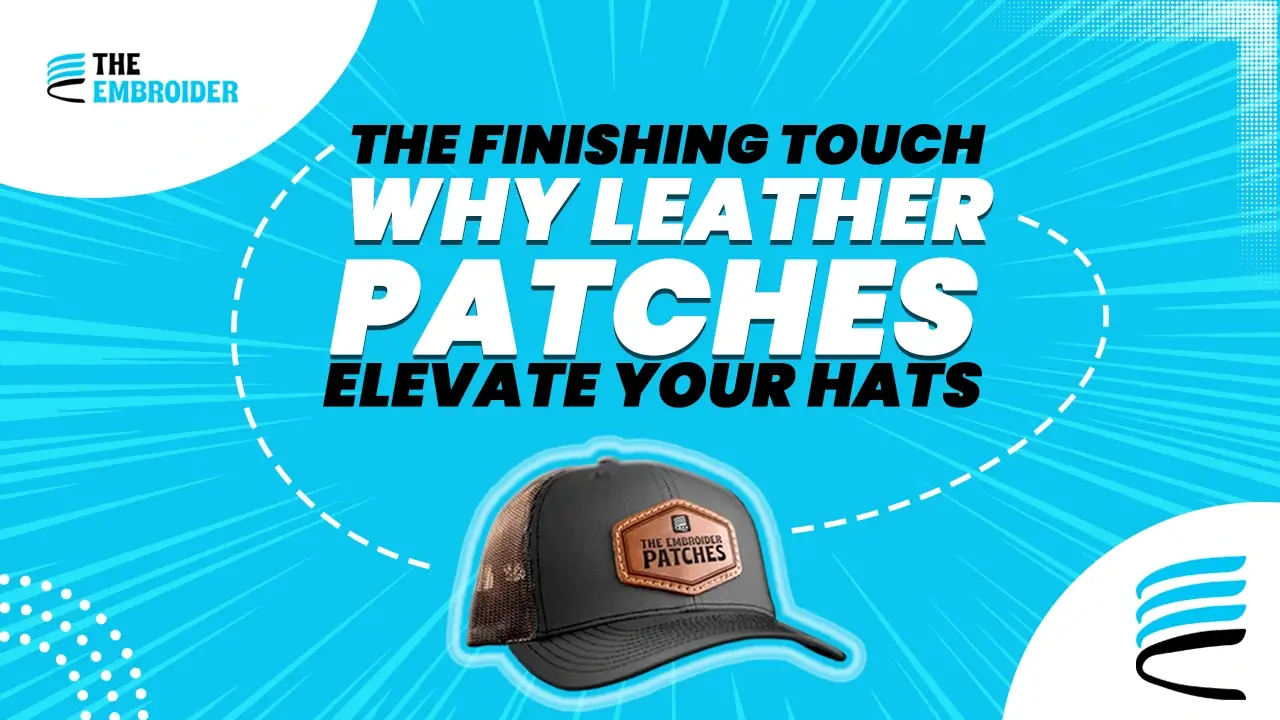A leather patch on a hat isn’t just decoration it adds texture, longevity, and a touch of craftsmanship. In this post, I’ll show why leather patches on hats stand out, how to attach them right, and tips gleaned from hands-on projects.
What Makes Leather Patch Hats Feel Special
Leather meeting fabric creates a contrast you can feel. That patch stiffens up part of the hat, gives structure, and, over months, subtly softens and develops patina. It becomes part of the hat’s story.
Beyond looks, leather holds up. It resists light water, abrasion, and wears better than many textiles. As Silver Screen Printing notes, “the durable nature of leather makes these patches perfect for items that might see wear and tear like hats, bags, and jackets.”
Styles, Materials & Design Options
You’ll spot patches on all sorts of hats, snapbacks, truckers, casual caps, even knit styles. The patch itself might be:
- Embossed (raised logo)
- Debossed (pressed into the leather)
- Laser-etched
- Combined with thread details or hat embroidery
Some makers mix materials leather plus embroidery, or leather plus PVC for visual depth and branding flair.
How to Attach a Leather Patch to a Hat
Here are two popular methods I regularly use, and what works best in real wear.
Heat Press / Adhesive Method
- Clean the hat surface thoroughly (remove dust, oils).
- Preheat to ~270 °F (or follow adhesive specs).
- Place the patch accurately, checking alignment.
- Apply firm, even pressure for the recommended time.
- Let it cool fully before moving.
This method gives a crisp, clean appearance when materials and adhesive are well matched.
Sewing Method
- Use a leather needle + strong thread (e.g. nylon or polyester).
- Pin the patch securely so it won’t slip.
- Stitch along the edges; on curved or strain zones, double-stitch.
- Trim any stray threads and press edges flat.
Often I combine both adhesive for placement, stitching for long-term hold.
What We’ve Done for Clients
We’ve executed many custom leather patch hat projects. One memorable case: we laser-etched patches, heat-pressed them, then stitched. After months of use: sun, sweat, outdoor conditions the patches remained solid, no fraying. That kind of durability testing shows which methods survive real life.
Why Leather Patches Add Value
- Timeless Style: Leather brings elegance, texture, depth something plain patches often lack.
- Built to Last: It handles outdoor conditions better than many fabrics, retaining clarity under wear.
- Brand & Personalization Edge: Leather elevates logos and designs. Pair it with custom embroidered patches for layered craftsmanship.
Design Tips for Better Hats
- Choose patch sizes that match the hat panels. Too big throws off balance, too small looks trivial.
- Finish edges (merrow, stitch borders) to prevent peeling.
- Use quality leathers (full-grain, vegetable-tanned) that age well.
- Condition occasionally, avoid extreme sun or moisture.
- Placement in the center front is classic; offset placements offer uniqueness.
Practical Care for Leather Patch Hats
- Wipe lightly with a damp cloth – no soaking.
- Use leather conditioner sparingly to keep flexibility.
- Never machine wash.
- Store in shade; avoid prolonged heat or sun.
- If it gets wet, air-dry naturally, then condition.
conclusion
When someone spots your hat and asks, “Where did you get that?” you’ll know it was worth the effort. Pairing hat embroidery with a leather patch isn’t just about style it’s about making a statement.
A well-placed patch tells people: you care about detail, quality, and how things age with character. So use good leather, stitch smart, protect it well and walk around with something that looks better every time you wear it.
If you ever want help designing the leather patch, digitizing it, or combining thread and leather the right way. I’ve got your back. Let’s make sure your hats tell your story, not just someone else’s.
FAQs
Q1. Will leather patches peel off after time?
If properly adhered and stitched, they rarely peel. But edges may lift if stitched poorly or exposed to harsh conditions always test with samples.
Q2. Is faux leather okay for patches?
Yes, for lower cost and vegan options. But it tends to crack or fade more easily than genuine leather.
Q3. Can you embroidery directly on leather patches?
Yes, but use thick needles, lower tension, and simple designs. Overly dense thread can perforate or stress the leather.
Q4. How thick should leather patches be?
Around 1.2 mm to 1.5 mm often works best. Too thin can fold; too thick may be hard to bend or press.
Q5. Which is stronger heat press or stitching?
Stitching typically gives more durability, especially in high-stress areas. Pressing is good for speed and clean look. Many professionals combine both.

